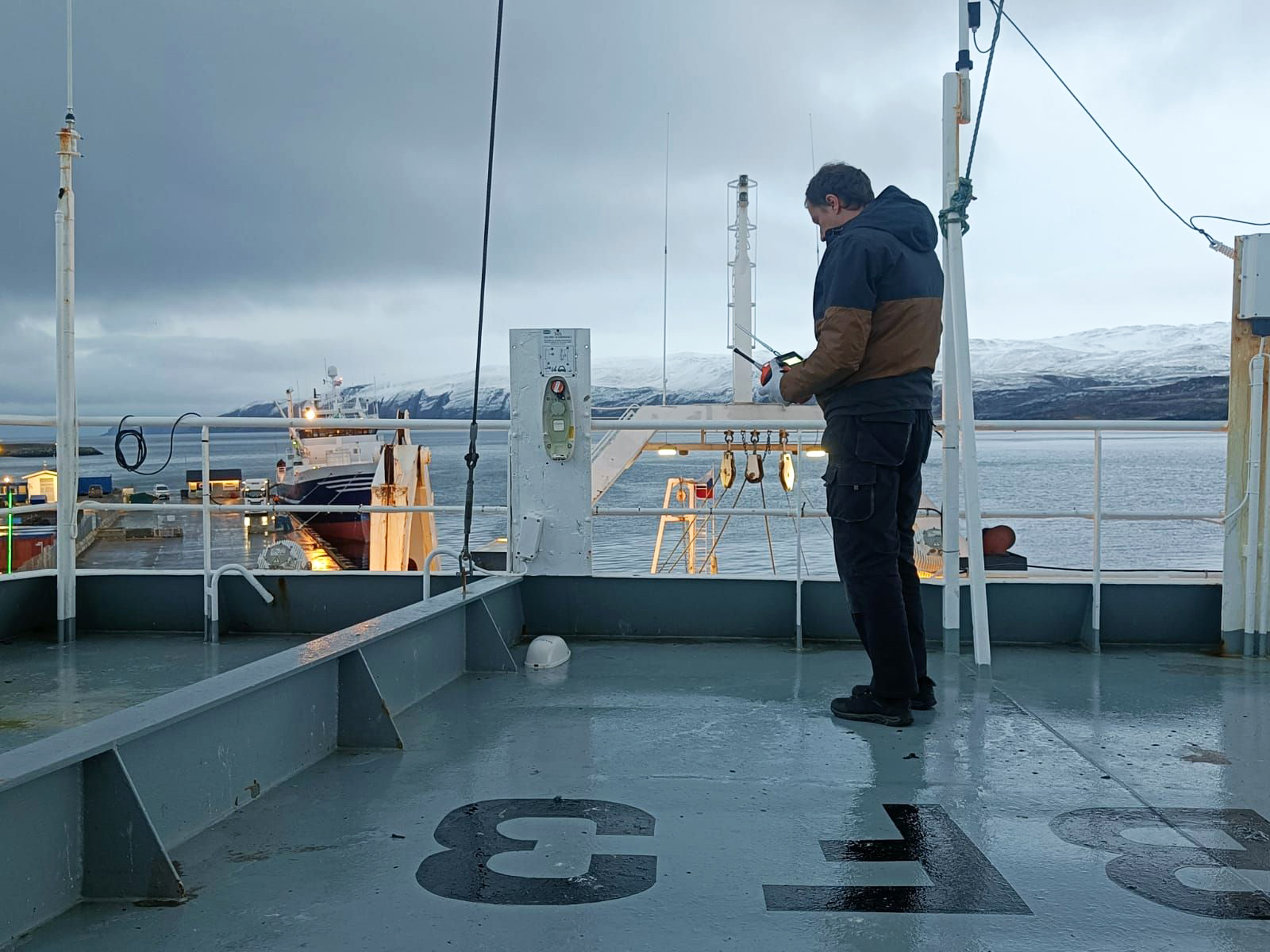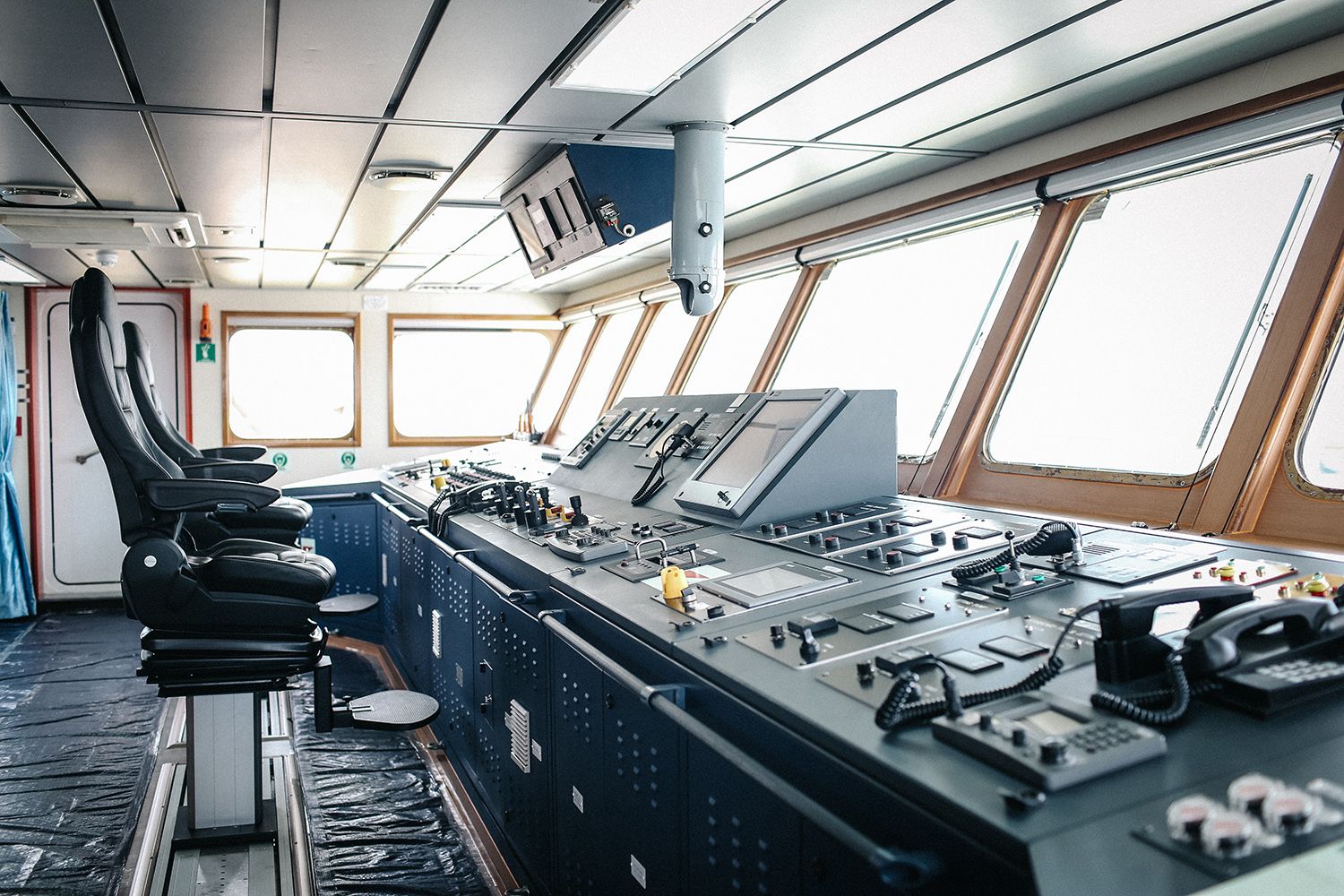Practical insights from GMDSS & AIS surveys: Lessons from the field
This article isn't a step-by-step guide to comprehensive inspections, and it doesn’t repeat the usual recommendations found in official documents. Instead, I share practical insights I’ve gained over the years while working with GMDSS and AIS inspections — as a service engineer, a classification society surveyor, and even as a crew member.
How to begin a radio inspection: three time-tested tips
1. Start with document verification
While it may seem overly formal, beginning with documentation review has its merits. Firstly, it allows for a smoother transition into the inspection, providing an overview of the vessel and facilitating planning. Secondly, issues such as expired radio licenses or discrepancies between documented and actual equipment can render further inspection ineffective or necessitate adjustments.
At this stage, also verify:
- Expiry dates of EPIRBs, SARTs, and emergency VHF batteries
- Hydrostatic release unit service dates
- Currency of ITU publications (List IV, List V, and other radio communication references)
- Condition of consumables
After this preliminary assessment, proceed to equipment inspection. While a detailed procedure is beyond this article's scope, a key recommendation is to utilize built-in self-tests in conjunction with instrumental testing. For instance, when inspecting a radio, initiate the self-test — paying close attention to the display and keypad functionality, as issues here are common yet often overlooked. Next, the MRTS-7M test set can be used to perform both measurements and functional tests, including on-air transmissions.
2. Work in the presence of the ship's crew
At least during power-up and initial checks. This helps avoid any misunderstandings or accusations that a piece of equipment was damaged during the inspection — unfortunately, this does happen, and I’ve experienced it firsthand. But even setting aside such risks, collaboration between the ship’s representative and the service provider improves both the efficiency and overall quality of the inspection.
For the same reasons, it’s also beneficial — whenever possible — to perform the inspection in the presence of the class surveyor.
3. Pay special attention to rarely used equipment
Equipment rarely utilized is more prone to malfunctions. Therefore, meticulously inspect devices designated solely for emergency use or serving as backups. Examples include MF/HF radios, Inmarsat terminals, and emergency steering communication systems.
Typical GMDSS equipment failures and preventive measures
1. Battery and backup power system issues
Older vessels, often having undergone multiple retrofits, frequently exhibit problems with backup power systems. While battery condition is generally monitored to some extent (though there are vessels where batteries haven't been replaced in over 10 years and are in poor condition), most specialists tend to avoid touching the power distribution scheme altogether.
Instances include:
- Installing new chargers without removing old ones, leading to mutual charging attempts and subsequent failures.
- Drawing backup power from non-GMDSS sources, like emergency lighting or fire alarm batteries.
- Utilizing "buffer" configurations where chargers, batteries, and loads are connected in parallel. While it's not entirely accurate to call this setup incorrect — it’s used on many vessels as part of the original design — it does impose significant limitations when it comes to future upgrades of the power supply system. In today’s environment, where adding new equipment is common, I would recommend transitioning from buffer configurations to true uninterruptible power supply (UPS) systems. In a proper UPS setup, separate power units are used for battery charging and for supplying the load, ensuring that under normal operating conditions, the batteries are not under constant load.
Another key recommendation based on the previous point is:
When checking the condition and remaining capacity of GMDSS batteries — whether using dedicated battery testers or a load fork — it’s crucial not only to disconnect the batteries from the power supply, but also to fully isolate all battery chargers beforehand.
Otherwise, there is a real risk of damaging the main equipment. Here's why:
On some vessels, part of the load is constantly connected to the battery — i.e., the system follows a "buffer" configuration. If you disconnect the battery for testing, the charger interprets this as a deep discharge and tries to “recover” the battery, raising the output voltage to its maximum. As a result, instead of the standard 24V, the GMDSS equipment suddenly receives as much as 40V or more on the supply line.
This kind of overvoltage issue is most common with older analog chargers that operate as basic current regulators without any microcontroller logic or protective features.
2. PA systems: what should be checked (but often isn’t)
Public address systems are essential — and legally required under SOLAS — yet they are often overlooked. Unlike radio systems, the technical requirements and compliance criteria for PA systems are minimal. As a result, many inspectors don’t check them at all, which is a mistake.
At the very least, I recommend verifying communication with the emergency steering station (usually the steering gear room) and testing the general alarm system. According to regulations, the announcements must be audible in every part of the vessel, including all enclosed spaces.
3. Radio interference from LED floodlights and switching power supplies
Here’s another tip that borders on a “life hack”: if the vessel is equipped with large LED floodlights (which is almost always the case on modern ships), ask the crew to switch them all on — and only then test the radio equipment, especially AIS.
Cheap or poorly shielded switching power supplies can generate strong RF noise, sometimes wiping out entire frequency ranges.
In one case, we spent several days troubleshooting an AIS issue where all distant targets kept disappearing — but only when we were off the ship. The root cause? After some digging, we figured it out: every time we left, it got dark, the crew turned on the lights... and the interference began.
Common issues during GMDSS and AIS testing — and how to avoid them
Following up on the earlier AIS example, I’d like to highlight an important point: often, the issue lies not so much in equipment faults, but in a limited understanding of how the system works and how it should be properly tested.
In AIS stations, there are no critical performance parameters that vary significantly depending on equipment condition — unlike, for example, the output power or VSWR of MF/HF radio systems. Simply put, AIS tends to either fail completely or lose specific functionality, rather than gradually degrade in performance.
Personally, I’ve never come across a transponder with noticeably reduced receiver sensitivity or diminished output power. And even if output power does drop, it’s difficult to detect: conventional analog power meters simply can’t react fast enough to measure the short bursts transmitted by AIS.
This is where solid knowledge — and the right test tools — are essential. The GMDSS and AIS Multi Tester MRTS-7M performs a wide range of functional checks — including correct decoding of simulated (“virtual ship”) signals and proper operation of time division modes.
To get accurate results, however, it’s crucial to connect the tester correctly — including the antenna, RF splitter, and pilot plug. Just as important is understanding and following the correct test procedure: how long each test takes, and what results are considered valid.
Overall, the AIS testing procedure using the MRTS-7M is somewhat more complex than testing equipment like EPIRBs or DSC units. However, it still does not replace a full functional inspection. It’s important to verify the accuracy of the static information entered into the system (such as ship identifiers, vessel type, and antenna position), as well as to confirm that the AIS correctly receives position data from both external sources and its built-in GPS receiver. In many cases, this needs to be shown to a Class surveyor during a comprehensive inspection. In practice, it’s not uncommon to encounter systems where only the internal GPS is functioning while the external one isn’t connected — or vice versa, where the external GPS works, but the internal antenna is faulty.
Got insights to share?
Field experience shows that it’s attention to detail that truly defines the quality of a radio inspection. I hope these observations prove useful in your own practice. And if you have your own tips or insights — feel free to share them in the comments. This kind of knowledge exchange makes our shared work more accurate and, ultimately, safer.
By Victor Panov






Be the first to comment